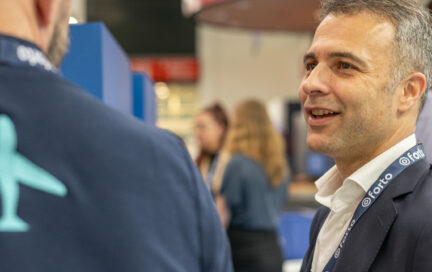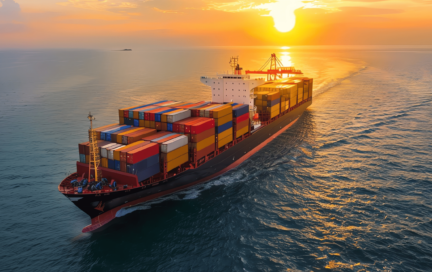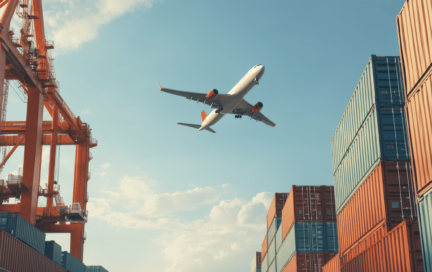In the field of sustainable logistics, emission offsetting and insetting solutions stand out as leading strategies for minimizing the environmental footprint of freight transportation. As the transport and logistics industry seeks more effective ways to combat climate change, understanding the differences between these approaches is important for companies aiming to make their supply chains more sustainable.
This post looks into offsetting and insetting as transport emission mitigation strategies. We review developments in offsetting, explore the importance of emission reduction and introduce Insetting Light by Forto as an innovative insetting solution for more impactful and cost efficient emission management.
Understanding Offsetting and Insetting
Offsetting, involves compensating for emissions generated from transport activities by investing in environmental projects outside of logistics that avoid, remove or reduce greenhouse gasses, such as forest management or renewable energy projects. It’s been a popular strategy, enabling companies to remotely neutralize emissions of their shipments.
Insetting, on the other hand, seeks to reduce emissions within the logistics sector, offering a more direct approach to sustainability and driving change within logistics itself. When it comes to freight emissions, insetting involves the adoption of alternative fuels or energy sources that emit fewer CO2e emissions compared to conventional fossil fuels. Sustainable Aviation Fuels (SAF) for air freight, biofuels for ocean freight and renewable electricity for rail freight are prime examples of insetting solutions that are gaining traction.
Both insetting and offsetting present viable paths to mitigate the environmental impact of transport activities. Each approach has its merits, and choosing between them depends on a company’s specific circumstances, goals, and the immediacy of their sustainability ambitions. Most importantly, taking any action towards sustainability is preferable to inaction.
The Evolution of Offsetting
Offsetting has long served as a sustainability tool, affording both organizations and individuals the opportunity to act more sustainably without disrupting their operations or lifestyles. It has been particularly crucial for industries where scalable decarbonizing solutions are not yet available.
However, the year 2023 posed significant challenges for the credibility of offsetting, also within sustainable transport. An investigative report on Verra, a prominent carbon standard, cast doubt on the integrity of its operations, suggesting that over 90% of its rainforest carbon offsets might be “phantom credits.” This finding called into question the efficacy of using rainforest carbon offsets as a sustainable practice.
Although Verra defended their methodologies, this incident highlighted the complexities and controversies surrounding carbon offsetting. In response to such controversies, recent efforts have aimed at refining offsetting strategies to enhance their transparency and effectiveness.
Despite criticism, offsetting, when used thoughtfully, can still contribute to a holistic sustainability strategy. It offers immediate benefits and is especially useful as a bridging measure while more sustainable, large-scale reduction solutions are developed and deployed.
Furthermore, the SBTi, an organization that helps companies to set emission reduction targets in line with climate sciences and the Paris Agreement goals, encourages companies to extend their climate action beyond direct emissions reductions from their own value chains, like investments in renewable energy, reforestation, and innovative technologies. The SBTi acknowledges that while companies should prioritize direct emission reductions through science-based targets, these additional actions can have positive climate impacts beyond their value chains.
The Significance of Active Reduction Through Insetting
Transportation is responsible for about 8% of global CO2e emissions, which means that even minor reductions can have a significant impact. While offsetting has been a useful interim measure in sectors where scalable reduction strategies are yet to be developed—for instance, in steel, cement, and chemicals, production or construction solutions are in their infancy—we are witnessing the rise of insetting solutions within our industry that tackle emissions directly at their source through alternative fuels.
Insetting solutions are straightforward and highly effective methods to reduce the carbon footprint of transport and logistics operations. Unlike offsetting, which compensates for made emissions, insetting actively reduces them. Take maritime insetting as an example: biofuels derived from regenerative sources such as plant biomass can slash emissions by up to 84% when compared to traditional fossil fuels.
Adopting insetting solutions allows companies to proactively lower the carbon footprint within global logistics, thereby driving the change of the industry. Transitioning to insetting represents a significant stride in our shared effort to combat climate change, offering more than a mere tactical shift—it signals a commitment to substantial and sustainable industry transformation.
Introducing Insetting Light: A Step Towards Emission Reduction by Default
As a company with Science Based Target Initiative approved emission reduction targets, Forto recognizes its responsibility to adopt and promote sustainable solutions to our clients, thereby contributing to the upscaling of sustainable fuels. Our Insetting Light program aligns with the Paris Agreement’s objective to limit global warming to 1.5°C and supports the transportation industry’s ambitious goal to reduce sea freight emissions by 40% by the year 2030.
Forto simplifies the transition to sustainability by seamlessly integrating Insetting Light into our shipping services as a standard feature. We believe that collective action—even if it begins with modest measures—can accumulate to deliver substantial environmental progress.
The Insetting Light offerings at Forto represent pioneering solutions that empower businesses to diminish the climate impact of their shipping activities without necessitating alterations to their existing logistic operations. Furthermore, Insetting Light extends its benefits across all modes and stages of transport within the supply chain.
Acknowledging that achieving total emission reduction in transportation through sustainable insetting solutions can be costly and not viable for every organization, Forto aims to democratize access by providing a cost-effective Insetting Light alternative, making it accessible and feasible for every customer.
Our Insetting Light services, through the use of alternative fuels, can reduce CO2e emissions by 2% to 5% per shipment. Although these measures do not completely reduce emissions, they serve to substantially mitigate the climate impact of shipping activities at a manageable cost, paving the way for a more sustainable future in transportation.
Every Choice Counts Towards a Better Future
Every sustainable decision for sustainability has an impact, and while offsetting has its place, we believe that the future of sustainable logistics lies in direct action at the emission source in supply chains. Insetting Light by Forto gives businesses an opportunity to effortlessly and economically transition towards more direct environmental stewardship.
If you’re interested in reducing your supply chain’s carbon footprint and actively contributing to a more sustainable future, contact Forto. Explore how Insetting Light and other sustainable alternatives can transform your logistics operations into a model for climate responsibility.







